The number of healthcare apps is exploding. From apps that help people manage chronic conditions to apps that manage medical appointment scheduling, the options for both consumers and medical professionals are increasing exponentially. According to researchers at Zion Market Research, this market will only continue to grow. The global mHealth apps market was valued at USD 8.0 billion in 2018, and by 2025 is forecast to generate USD 111.1 billion.
As a healthcare company, you possess a wealth of knowledge and expertise. Micro-sites and apps, focused on a specific topic or event, offer a high-profile way to showcase your expertise and support your customers.
So how do you determine what expertise you want to highlight, and how?
Well, the good news is that you don’t have to compete with popular apps like Color Bump 3D or Helix Jump with your site or app. When it comes to healthcare, your users aren’t looking to be entertained. They want tools that help with a specific objective – to manage a condition, book an appointment, or learn about a field or topic that’s relevant to them. Any tool you create needs to be practical and informative to provide them with real value.
Start by considering your target groups. What do they need? And what’s the best way for you to meet that need for them?
Most of your target groups need information. Whether they’re patients managing a heart condition, or prospects looking for insights before purchasing a medical device, information is the most sought-after commodity in the healthcare world. But an information-intensive website isn’t always the most effective way to share information. That’s where an app, a community or a micro-site can provide a more useful and user-friendly alternative.
» Download your free e-book on healthcare marketing «
For a major diabetes care company, for example, we developed a Facebook community where people with diabetes could share their experiences and suggestions, on everything from how to exercise with diabetes to concerns about managing the disease.
This community also included scientific information. Since the topics and focus are directed by the community members, the content is constantly changing, so it’s always fresh and interesting for members.
That highlights a potential problem with informative apps: companies create them, launch them to a target group, but sometimes fail to keep them up-to-date.
Be cautious about what your healthcare app promises to users.
Unless you are prepared to maintain your app for the long term, it might be better to focus it on a specific time frame or event.
An example of this is the Showpad app we created for Cerus, a biomedical products company focused on the field of blood safety. The app highlights the expertise shared at a specific event: the ‘International Seminar On Blood Safety’ which Cerus presents each year. The event brings together key opinion leaders in the field, who share the latest findings and expertise.
Cerus was already using the Showpad platform, so Living Stone created a Showpad app containing video, slides and references to the literature, along with the speakers’ key messages and additional background materials. The app was shared with attendees of the event and the wider medical community, and the Cerus sales teams use it in presentations as well.
The Showpad app allowed Cerus to leverage the seminar content far beyond the event itself. And because it covers a specific event, the content doesn’t need to be refreshed or updated.
There are lots of ways you can support your customers, and your marketing programs, with customized digital marketing tools. If you’d like to explore ideas and options, we’d be glad to talk with you. Call or email Anne-Mie Vansteelant at Living Stone, at +32 55 591 007 or anne-mie.vansteelant@livingstone.eu.
Resources
‘mHealth Apps Market by Type [Healthcare Application (Chronic Care Management Apps, Fitness & General Health Apps, Medication Management Apps, Personal Health Record Apps, Women’s Health Apps, and Others) and Medical Application (Continuing Medical Education Apps, Medical Reference Apps, Consulting & Communication Apps, and Patient Monitoring & Management Apps)]: Global Industry Perspective, Comprehensive Analysis, and Forecast, 2018—2025,’ Jan. 23, 2019, Zion Market Research, retrieved from https://www.zionmarketresearch.com/report/mhealth-apps-market
Rahul Varshneya, ‘A Step-by-Step Guide To Building Your First Mobile App,’ June 13, 2019, Entrepreneur.com, retrieved from https://www.entrepreneur.com/article/231145
Rowan Emslie, ‘Pharma Apps Fail Because They Have No User Acquisition Strategy,’ April, 4 2017, Priori Data, retrieved from https://blog.prioridata.com/big-pharma-doesnt-understand-the-app-market
Shreyas Tanna, ‘Healthcare apps nowadays aren’t created to cater to the needs of patients who are diverse and have low-income,’ July 24, 2019, Health Gazette24, retrieved from https://www.healthgazette24.com/healthcare-apps-nowadays-arent-created-to-cater-to-the-needs-of-patients-who-are-diverse-and-have-low-income/1366/


.jpg?width=727&name=Living-Stone-CTA-Blog%20(002).jpg)

